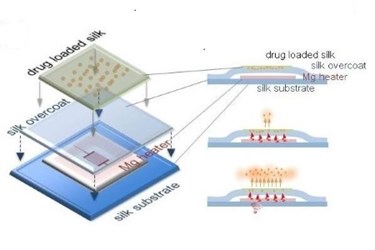Wireless, Dissolvable Medical Devices Deliver Therapy On-Demand
By Chuck Seegert, Ph.D.

To fight bacterial infection, researchers have developed an implant that can deliver either antibiotics or thermal therapy. After triggering the implant via a WiFi-like connection, the device will deliver treatment and dissolve, eliminating the need for a secondary surgery.
In the past, it was often necessary to remove implants after they performed their function. After a certain time, many devices may have limited usefulness in vivo, where they become more of a liability and a nuisance.
A new device developed by Tufts University researchers may overcome some of these shortcomings, thus avoiding secondary surgeries and the attendant complications that may follow, according to a recent press release from Tufts Now. The team has developed a new wireless therapeutic implant that can safely dissolve at a designated time — be it minutes, days, or weeks.
"This is an important demonstration step forward for the development of on-demand medical devices that can be turned on remotely to perform a therapeutic function in a patient and then safely disappear after their use, requiring no retrieval," said Fiorenzo Omenetto, a professor of biomedical engineering and Frank C. Doble professor at Tufts School of Engineering, according to the press release. "These wireless strategies could help manage post-surgical infection, for example, or pave the way for eventual 'wi-fi' drug delivery."
The Tufts design was tested in vivo where it was used to treat a staphylococcus aureus infection, according to a recent study published by the team in the Proceedings of the National Academy of Sciences. The resorbable electronics included a serpentine resistor and a magnesium power receiving coil, both of which were housed in a silk protein envelope, according to the press release. The silk guarded the electronics from the fluid environment while determining the time it took for the device to resorb.
In vivo, some of the wireless implants were used to deliver thermal therapy, according to the press release. Other configurations designed to deliver antibiotics were successfully tested in vitro.
Tissue samples from a mouse model were free of bacteria as soon as 24 hours after treatment, and the implants had fully resorbed by 15 days. This type of function would allow external control of antibiotic release in situations where diffusion of a systemic drug may not be as effective. It could also enable localized therapy without systemic exposure to drugs, which potentially causes side effects.
Implants with wireless control are an exciting area of medical device research that promises to endow devices with never-before-seen functions. For example, an implant was recently tested that was remotely controlled by brain waves in order to deliver gene therapy in vivo.
Image Credit: Tufts University
